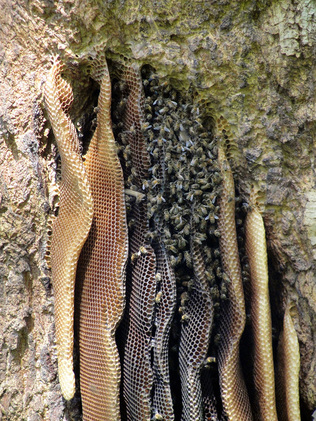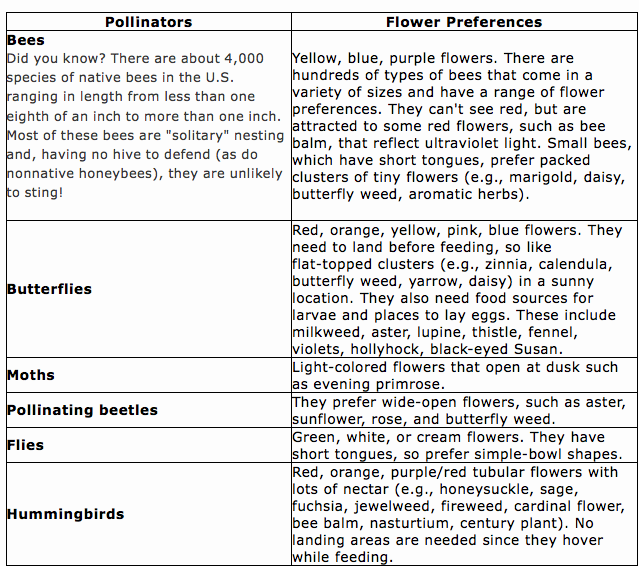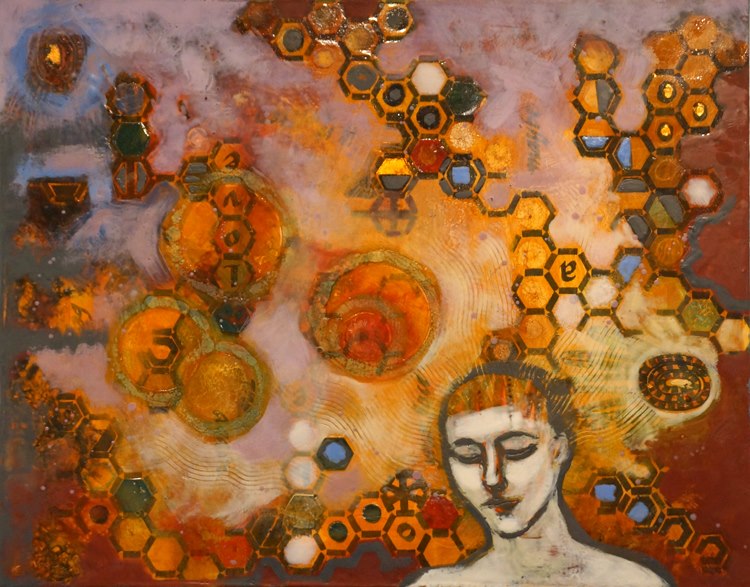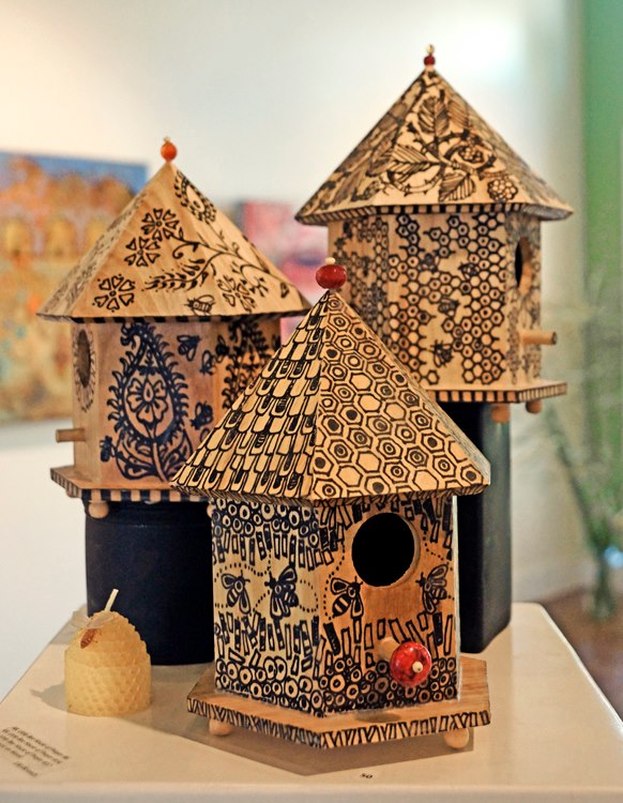|
by Regan Carney This month - To grow food, the world needs bees. But the bees are in trouble - why and how can we help? photographs by Ellis Anderson
Bees are a varied group of insects. In the USA alone there are at least four thousand different species. Bumblebees and sweat bees come to mind right away. Most of the bees that live around us are “solitary,” meaning that they don’t live in a hive and most of them do not make honey. But most of them ARE interested in flowers, so they make excellent pollinators. They are not the only insect that acts that way, but they are the most well known. The early settlers of this country brought their friendly honeybees with them, so that their crops would be pollinated and so that the colonist could have that honey, Ah that sweet honey! They set up beehives near their fields, and apiculture was off in America! It has become a very big and necessary business. As farms have gotten larger and less diverse in what they grow, they have had to truck in mobile hives. The scientists are beginning to think that this may be stressing the bees. The farmers are using pesticides and herbicides on their crops. The scientists think this may also be stressing the bees. The bees are fed corn syrup during the winter. The scientists think this may not have a diverse enough nutrition and it is stressing the bees. Someone imported bees that may have had a virus that is spreading through the bee population on the backs of a mite and that may be killing the bees. This has lead to Colony Collapse Disorder (CCD). The number of hives that die off per year varies across the country. It ranged from 20% to 64% in 2013. It seems to be leveling off, but the numbers are still high and worrisome because no one knows exactly what is causing it. The native bees are also being affected, but there are no numbers on them. The honeybee, at least the worker, only lives up to a couple of months. A male drone dies right after mating with the queen. A queen can live for three to five years. There are up to 1,500 bee eggs being produced at any one time. A hive will contain 20,000 to 80,000 bees. We may be able to help the insect world by making the land around our houses bug friendly. Here's how:  a natural hive in a live oak tree on the grounds of Houmas House plantation in Louisiana a natural hive in a live oak tree on the grounds of Houmas House plantation in Louisiana 1. If you are going to spray pesticides on your plants or house, please read the instructions: spraying when plants are flowering will accidently kill the bees. Most bees are not aggressive. They will sting to protect their hive and then die, so they have to really need to do that. Most bugs are good for your garden (OK, not all of them, but most of them) and they will generally set up a balance. 2. Try alternatives to pesticides. How about soap spray (I use Ivory soft soap and water). Use the least harmful first and give it time to work, rather than whipping out the big guns first. There has been a lot of research about the communities of bacteria, bugs and nutrients in your garden soil. Smart observation, research and small changes will lead to better solutions. 3. If you realize that your house, a piece of outdoor furniture, or a tree on your land has become colonized with a hive, call a bee rescuer before killing the hive. It is important that bee diversity is maintained and rescuing hives is one of the ways to do that. Or you could become a bee keeper! 4. Plant a wildflower garden NOW. Diversity of plant life is good for the bugs, the environment, and yourself! See below for a chart suggesting things to plant from kidsgardening.org 5. Gulf Coast Bee Keepers Association meets 2nd Tuesdays at 7 pm in the Gulf Coast Community College Science building. Contact Dan Triplett at [email protected] Learn more! Jeffrey W. Harris, PhD Ext. Research Apiculturist [email protected] The Honeybee Health Coalition: https://keystone.org/bee-health, or contact Julie Shapiro at [email protected] Jon Entine, Science Collapse Disorder--The Real Story Behind Neonics and Mass Bee Deaths. Forbes, 4/11/2013 Lisa Granshaw, 5 Fun Facts About Bees — and How You Can Help These Disappearing Insects, vetSTREET.com, July 10, 2013 Encaustic art by local artist Kat Fitzpatrick The word encaustic is taken from the Greek and means “to burn in.” In the encaustic process, pigmented beeswax is applied and then fused to a surface with heat. The result is a broad range of surface effects and a luminous translucency that is unique to the encaustic medium. Check out Kat's website for more images of her work or to sign up for a class.
You can also find her work at the Mockingbird Cafe, a Prime Sponsor of the Cleaver! Comments are closed.
|
Categories
All
Archives
July 2024
|
Shoofly Magazine Partners
Our Shoofly Partners are local businesses and organizations who share our mission to enrich community life in Bay St. Louis, Waveland, Diamondhead and Pass Christian. These are limited in number to maximize visibility. Email us now to become a Shoofly Partner!
































 RSS Feed
RSS Feed























